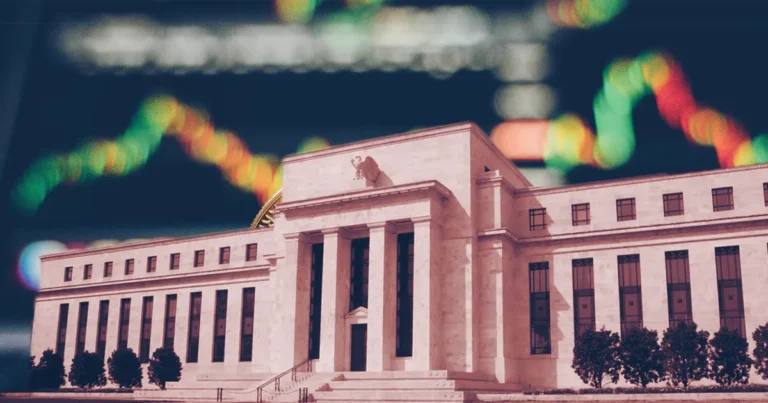20-3-2025 – The Federal Reserve maintained its current monetary policy stance, keeping the benchmark federal funds rate unchanged at 4.25%-4.50%. This marks the second consecutive hold following a series of three rate reductions that concluded in late 2024.
The central bank’s latest quarterly economic assessment paints a more cautious picture of the American economy. Most notably, growth projections have been substantially revised downward, with 2025’s GDP forecast trimmed to 1.7% from the previously estimated 2.1%. Similar downward adjustments were made for subsequent years through 2027.
Amidst mounting political tensions surrounding proposed tariff measures by the Trump administration, the Federal Open Market Committee (FOMC) explicitly acknowledged heightened economic uncertainty in their accompanying statement. This comes as policymakers grapple with elevated inflation figures, with core PCE inflation now anticipated to reach 2.8% this year, markedly higher than December’s 2.5% forecast.
The FOMC’s forward guidance, as reflected in the closely watched ‘dot plot’, maintains its year-end target of 3.9% for the federal funds rate, aligning with December’s projections. The committee continues to envision a gradual easing trajectory, with rates expected to settle at 3.4% and 3.1% in 2026 and 2027, respectively.
A significant policy shift was announced regarding the Fed’s balance sheet management. Beginning 1 April, the pace of quantitative tightening will be moderated, with Treasury security reductions scaled back dramatically from $25 billion to $5 billion.
Financial markets exhibited mixed reactions to the announcement. Whilst American equities maintained their upward momentum and sovereign yields eased marginally, Bitcoin demonstrated characteristic volatility before settling lower at $83,500. Gold continued its remarkable performance, hovering near historic highs at $3,048 per ounce.
Recent market sentiment has been dampened by growing apprehension over the potential economic ramifications of proposed tariff measures, coupled with the Fed’s increasingly hawkish stance since late 2024. These factors have contributed to broader weakness across risk assets, affecting both traditional and cryptocurrency markets.


